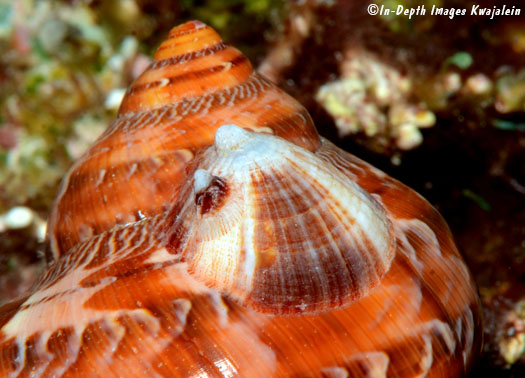
This cap shell is very common and found attached to other seashells.

A smaller male is nearly always attached to the shell of a larger female.
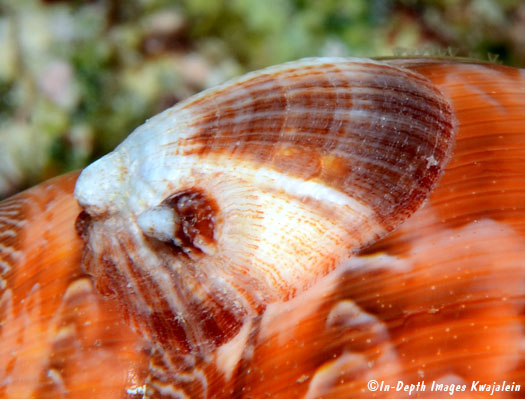
Cap shells fit well to the surface they are on. They feed by raising the lip of the shell and stretching out a long proboscis to gather up food. Over time, the cap shells dig into the shells of their hosts, sometimes digging all the way through as shown in the photo below, where a cap shell had dug through to the interior of the now empty turban shell. Eventually the cap shell fell off (possibly by dying), leaving an open hole in its host, which may have been what killed the turban.
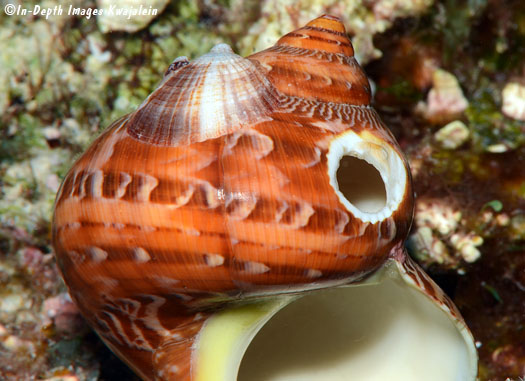
Sometimes the cap shells are found crowded onto a single host shell, such as the turban below.
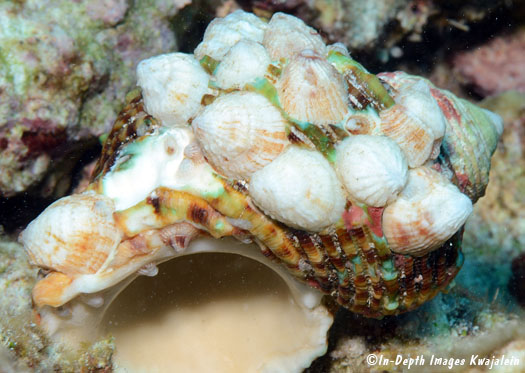
A closer look at the white patch on the above turban crowded with cap shells shows the patch to be a cap shell scar. The cap shell that formed the scar is gone, probably dropped off, and several smaller caps are now occupying part of the patch. Additional small cap shells are seen around the aperture of the turban shell below the scar. This turban is also empty.
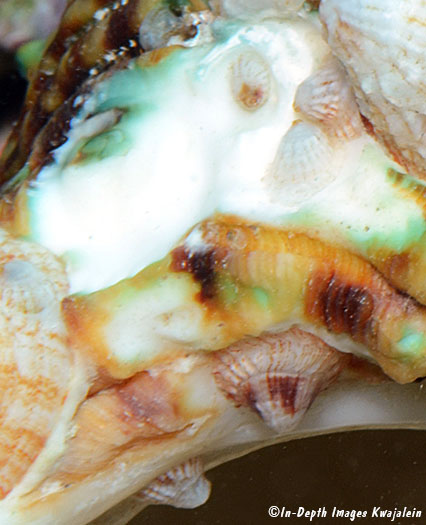
Below a cap shell rides on a Nassarius horridus, a shell that buries in sand when not active.
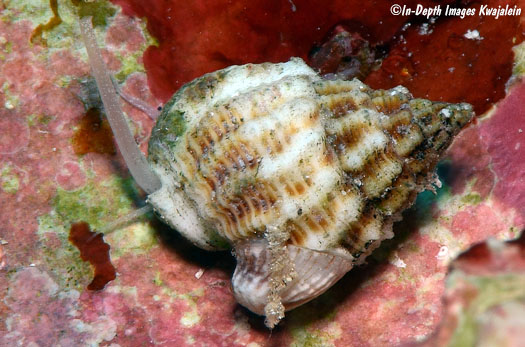
The photo below is from Hawaii. It shows a pair of Sabia conica on the cowry Lyncina sulcidentata. Both cap shells are raised up a bit with tentacles and feeding probosces extended.
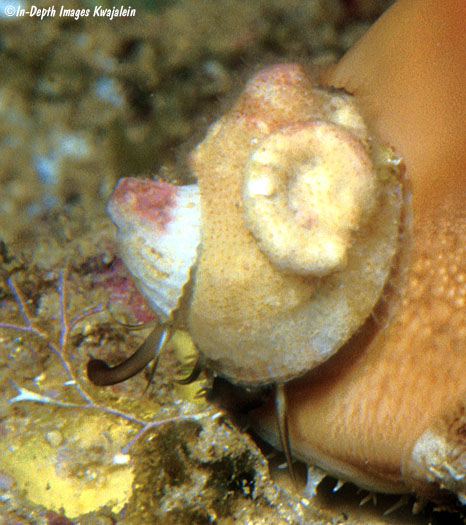
Cap shells usually remain on shells after the mollusk has vacated and the shell been occupied by a hermit crab, as in the next three photos.
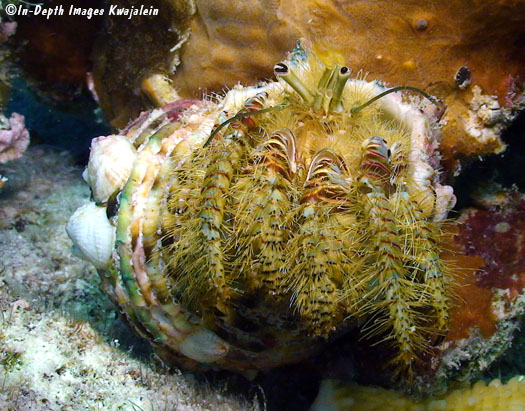
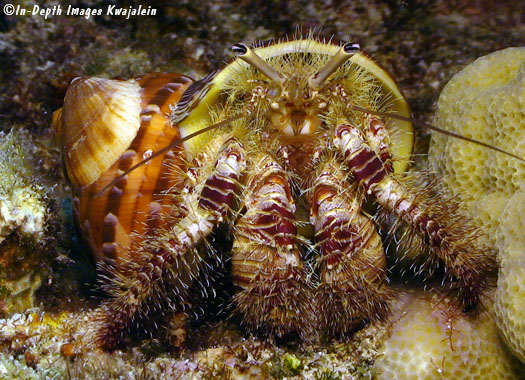
The large hermit Dardanus guttatus occupies the very old giant finger shell (Lambis truncata) below. All around the nacreous portion of the finger shell's aperture are cap shells and scars where other used to be.
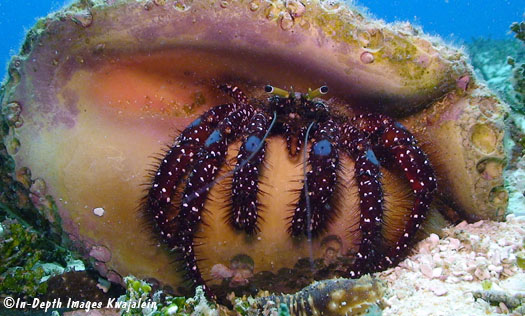
Empty shell. Note the white scar on the dorsal surface where the smaller male had been.
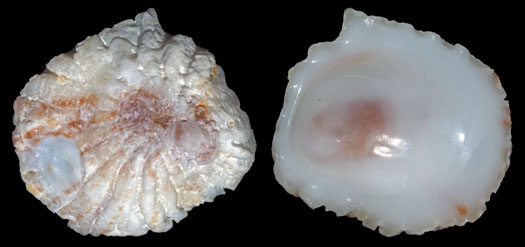
Created 13 March 2018
Updated 25 July 2020